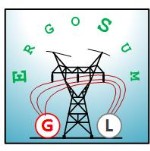Definition of Generator Capacity
"What Is ?" > Capacity Or Energy? > Capacity
Capacity
The usual definition provided for Capacity is with reference to a generating Unit. In this context, the term capacity refers to the maximum amount of power that a Unit can produce. Capacity is measured in units of Power, namely, Watts (W). In practice the Watt is too small and the MW (One million Watts) is used instead.
When referring to the reliable operation of an electrical power systems, such as the North American interconnections that supply electricity to our homes, our factories, and our institutions, the term Capacity refers to the amount of power from a Unit that the system operators can utilize to maintain operating reliability, namely, to prevent blackouts. This operating context is the one that must be used when evaluating the usefulness of different generation technologies to supply Capacity to the System. And this is the context that a system operator or engineer has in mind when he talks about Capacity. In this context, Capacity is defined as:
"Capacity of a generating Unit is the amount of power from the Unit that the System operator can rely on for online deployment when and where needed to maintain reliable Grid operation."
To avoid confusion, it would be helpful to use different terms for the above two types of capacities. For any writing on this website, the term Ecapacity, for equipment capacity, is used to refer to the maximum MWs that a Unit can generate, and "Capacity" is used to refer to the maximum MWs which a System operator can rely on when and where needed to maintain reliable System operation.
To exemplify the concepts related to the above two types of capacities, consider the illustration below that shows a very simplified schematic of the generator G1 connected to the System with transmission line L. In the situation illustrated, although the Ecapacity of G1 is 1000 MW, its Capacity is only 500 MW because the flow of power from the generator to the System is restricted by the Ecapacity of line L.

There are other reasons that will reduce the Capacity of a generating unit such as fuel availability. If the fuel supply to a generating unit is restricted, for whatever reason, the Capacity of that unit is also restricted accordingly. For example, if a combined cycle gas unit has an EquipmentCapacity of 500 MW, but has its gas supplied by a pipeline that can supply gas at a maximum rate of 200 MW, then the Capacity of the unit reduces to 200 MW.
As the System is a very complex set of apparatus with many rotating generators and motors oscillating against each other, it is subject to instability modes that depend on operating conditions of load, voltage, generation schedules, and power transfer. To avoid unstable operating modes, the system operator may be forced to decrease the Capacity of certain equipment such as generators or transmission lines.
On the basis of above discussion, it is clear that Solar and Wind generation has zero capacity that can be relied on by the System operators when and where needed to maintain reliable system operation because the sun does not shine all the time and the wind does not blow all the time and it is not certain when the sun will shine or when the wind will blow. Furthermore, the operators have no control on when generation from these sources comes on line. So not only generation from these sources provides no capacity, when they come on line they endanger the reliability of the system as the operators have to rush to back down the online coal an gas generation.
